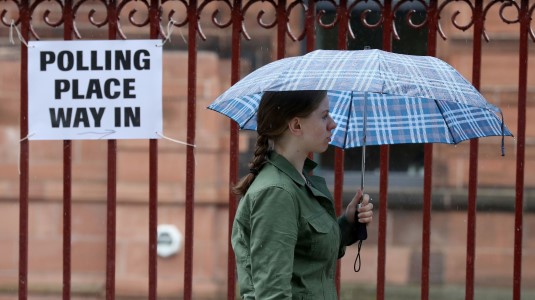
Party
|
Number of Candidates
|
Total Vote
|
%
|
+/-
Mar |
+/- Apr 17
|
Average/
Contest |
+/-
Seats |
Conservative
|
10
|
6,186
|
38.9%
|
+4.5%
|
-0.3%
|
619
|
-3
|
Labour
|
8
| 1,594 |
10.0%
|
-15.2%
|
-20.6%
|
199
|
0
|
LibDem
|
10
|
3,843
|
24.2%
|
+14.1%
|
+8.0%
|
384
|
+4
|
UKIP
|
2
|
117
|
0.7%
|
-0.5%
|
-1.8%
|
59
|
0
|
Green
|
8
|
1,041
|
6.6%
|
+3.8%
|
+0.8%
|
130
|
+1
|
SNP
|
2
|
2,040
|
12.8%
|
+12.8%
|
1,020
|
-1
| |
PC**
|
0
|
0
| |||||
Ind***
|
6
| 1,067 |
6.7%
|
+1.1%
|
178
|
-1
| |
Other****
|
0
|
0
|
* There were two by-elections in Scotland
** There were no by-elections in Wales
*** There were two Independent clashes
**** There were no Others this month
What a rubbish result for Labour. I've done this by-election tracking lark for five years and I can't remember seeing such an awful set of figures. Yes, in the grand scheme they don't matter, and the only matters of significance are the winning and losing of councillors won and patterns of support over time. And yes, I would be the first to point out all but one of the month's contests were in places where Labour would never stand a chance. Such is the crumbing of the by-election cookie.
But come on. The Tories are in a death spiral. Their vote might be holding up, but the party is falling to bits before our eyes. The most formidable election winning machine democratic politics has ever known is well below 100,000 members. And yet, yet, week after week, year after year they reach into the barrel and scrape out candidates to stand almost everywhere. Meanwhile Labour has numbers not seen since the 1970s, and yet it is consistently out-organised by a cranky, ageing outfit around eight times smaller than it. How can this be? Frustrated answers on a post card, please.
5th April
Fylde Heyhouses Con hold
Highland, Caol and Mallaig Lib gain from SNP
New Forest Milford Con hold
Taunton Deane Wiveliscombe and West Deane Grn gain from Ind
12th April
Chichester Rogate Lib gain from Con
St Edmundsbury, St Olave’s Lab hold
South Northamptonshire, Middleton Cheney Con hold
19th April
Perth and Kinross, Highland Con hold
Warrington, Lymm South Lib gain from Con
West Berkshire, Thathcham West Lib gain from Con
2 comments:
«out-organised by a cranky, ageing outfit around eight times smaller than it. How can this be? Frustrated answers on a post card, please.»
The Conservative are far from a death spiral, property prices in the south-east and London are still huge (but there is trouble at the top end in London). The Conservative party was in a death spiral 1997-2007, barely opposed by a very unpopular New Labour prime minister, and yet producing a series of not very credible alternative leaders and policies.
But as soon as property prices crumbled in 2008, the voters "threw the bums out" and voted in whoever was in charge at the time.
I understand that people who think that "politics" (intended as a contrast of ideas and policies) is what matters, but for most families general elections are a house price referendum.
Because the numbers involved are huge, consider this quote from a commenter on "The Guardian":
“I inherited two properties in 1995 [ ... ] and the value has gone from £95,000 to £1,100,000”
It may sound surprising to political sociologists in Stoke, but upward redistribution of £43,000 a year usually tax free and entirely work-free drives a lot of votes, regardless of anything else.
That doesn't explain why so many people who do not live in London or the South East vote Tory...
Post a Comment